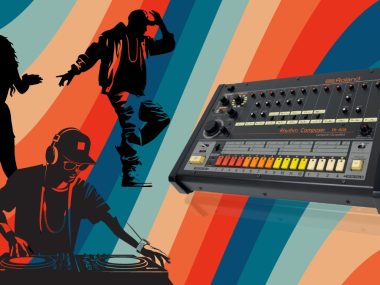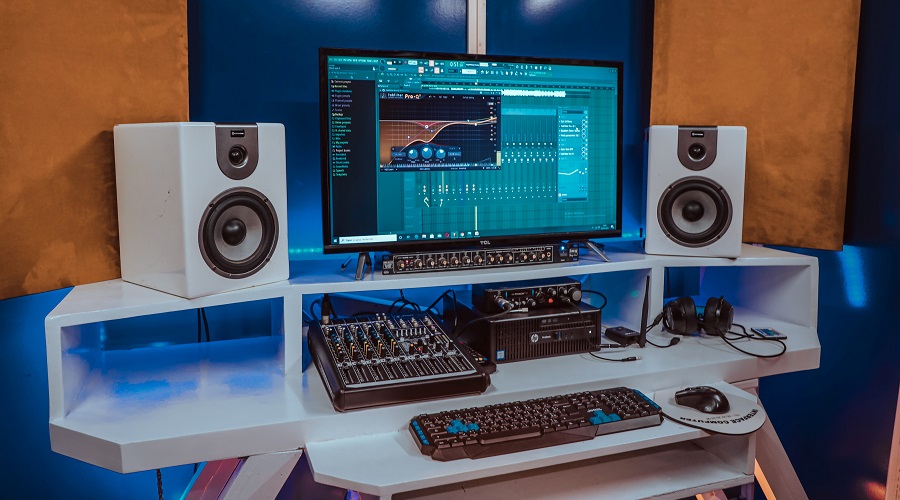Ever called someone from your bathroom and were instantly asked, “Are you talking to me from the bathroom?” Well, regardless of your potentially embarrassing but perfectly normal reason to do it, they’ve probably figured it out because of the reverb.
You may not know this, but reverb is something that exists all around us. In fact, our ears are so used to hearing it to the point that reverb-free sounds seem unnaturally flat.
Reverb happens in every closed space you’ve ever been to, and some open spaces, too. Without it, most musical recordings would sound muted, out of context, or eerie.
In this post, we’ll go over what reverb means and how it’s created. We’ll also discuss different ways you can play with reverb effects.
Defining Reverb
Reverb is an abbreviation of the word reverberation. Defining reverb doesn’t do a great job in explaining how it actually sounds, but here it goes: reverb is when a sound echoes on different surfaces at different speeds, giving more layers to the original sound.
What Is Reverb in Music?
Now that we’ve got the basic definition out of the way, let’s look into what reverb really is. To fully understand what reverberation is, we have to look at how sound travels and go through some reverb lingo while we’re at it.
Sound travels as a sphere expanding from its source. So, when someone is talking to you directly, your ears register two different kinds of sound.
The first one and the most vivid of them is the person’s voice itself. This is the sound wave that goes directly from the source to your ears. This is what we call the direct or dry sound.
The second kind is not the original sound itself, but its reflection off of the surfaces around it. When you talk, sound waves go in every direction, hitting whatever surface it meets.

Once it hits these surfaces, it’s reflected onto your ear but from completely different angles than the original sound wave.
Some of these rays will be reflected off of multiple surfaces and will take time to reach your ear, but some will only reflect off of one surface. These will hit your ear first and will be the clearest since they didn’t lose a lot of energy. They’re called early reflections.
Now, we’re talking about a whole sphere of sound waves in a room full of surfaces. Walls, tables, people; any “object” in the room is considered a reflecting surface. So, the waves that are reflected onto your ear actually come from all directions with varying intensities and quality depending on the surfaces they hit.
A fleshy human body reflects muffled sound waves, whereas a stone wall reflects sound with more fidelity. This mishmash of echoes of the same sound reaching your ears at different intervals, volumes, and clarity, creates the reverb effect.
A sound that has reverb is considered a wet sound, which basically means that the sound has been modified in any way.
Fun fact: reverb is basically how bats can see. Echolocation that bats and dolphins use means that the animal makes a sound, hears all the reflected sound waves, and deduces the objects that reflected them and how far they are. Pretty amazing, right?
What Are the Parameters of Reverb?

There are plenty of different controls to tweak when you’re experimenting with reverb, but some will have a much more pronounced effect than the rest.
In this section, I’ll talk about digital reverb controls in music. We won’t be talking about vintage controls since they’re not very common nowadays.
Reverb Tail
Reverb tail or decay time is how long the reverb effect takes to go completely silent after the dry sound. It’s closely related to reverb size since decay length is calculated based on the distance between the walls.
If you’re using a digital reverb, you may have different controls for the size and decay time, but they’ll most likely be linked or proportional to each other.
One of the most common beginner mistakes is having a long decay time. Longer decay times allow the wet sound to interfere with background instruments and the overall ambiance.
Pre-Delay

If you speak in a large hall with nothing between you and the walls of that hall, the first wave of echo will take a few milliseconds to travel back to you. This delay between the dry sound and the wet sound can make a huge difference in how things sound.
Unlike natural reverbs, digital reverb goes off at the same time as the dry signal, which can drown it out a bit. Adding in pre-delay fixes this problem by delaying the onset of the early reflections.
Diffusion
Diffusion controls the reverb’s thickness. A reverb with a high diffusion rate will sound more dense and blended. Lower diffusion rates can result in lighter reverb, but it can also produce a radio-like noise.
Is Reverb Different from Echo?
The short answer is yes, echo and reverb are two different things. If you’re new to the world of acoustics, differentiating between reverb and echo can be tough.
An echo is created when a sound travels a relatively big distance and is reflected as one coherent repetition of the original sound.
Because of the distance traveled, the delay between the original sound and its echo is significant enough that you can make it out.
A simple way to know if certain audio has an echo or reverb is its intelligibility. With an echo, you can easily recognize a specific sound wave that’s very similar to the dry signal.
Types of Reverb

Now let’s talk about music. Reverb is like a musical magic potion that enhances just about any sound it touches, which is probably why it tends to be overused.
There are loads of different ways you can add reverb to your recordings, and all of them will give you different results.
That said, it’s become unusual to record using acoustic or mechanical reverbs, now that we have digital ones that we can use from the comfort of our chairs.
Acoustic Reverb
If you’ve ever startled yourself with how good you sounded while singing in the shower, it might be because your bathroom has good acoustics, which allows for more significant reverb.
Acoustic reverb is the original and arguably the best method of adding reverb to a recording. Acoustic reverb can be anything from a room that has a high ceiling to stone or tile walls, or even just solid furniture.
Big recording studios build echo chambers, which are rooms designed specifically to allow for perfect reverb. These are usually rooms that have very solid walls, zero fabrics in sight, and strategically placed objects.
The original echo rooms, however, were cathedrals and halls. These vast spaces create a very long reverb tail that adds a ton of depth and texture.
Mechanical Reverbs

If you wanted to add the reverb effect to a recording you’re working on, you could just use some app or program to do that, right? Well, what if you don’t have programs, apps, or even phones? You can resort to electromechanical reverb tools; they’re designed to mimic the natural reverb effect of an echo chamber.
Of course, considering that they’re made entirely out of metal, they have a unique metallic, almost raspy sound that’s completely different from natural reverb. This can often be one of their biggest advantages.
Spring Reverb
Spring reverbs were the first artificial reverb tools ever invented. They were first created for Hammond organs in the 30s but were later sold separately because of how popular they became.
Since then, they’ve become a staple in all studios and a lot of guitar amps, seeing as they’re quite compact and affordable.
In a spring reverb, the audio is transferred into one end of a metal spring (or springs), which causes them to vibrate. After passing along the spring, the resulting sound gets recorded and added to the original sound.
While this was made to simulate the effect of an acoustic reverb, the resulting sound is considerably different. Spring reverbs are known to sound metallic and often a little high-pitched. Their sound was pretty popular in the 60s.
Plate Reverb
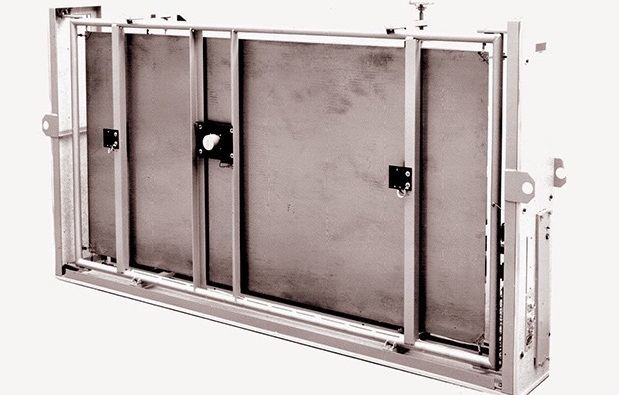
These reverbs have a unique sound that stands out from the rest. This is because the plate reverb uses a metal plate, which makes the resulting echoes sharp, rich, and perky.
Plate reverbs are named after their main component, the metal plate, which is enclosed in a metal case with some space in between.
As sound travels through the metal sheet or plate, it creates a ripple of movement that bounces off the walls of the case it’s in.
The resulting sounds are very close, which makes the plate reverb stay very close to the original sound while amplifying the higher pitches. Plate reverb is popular with percussion and vocals.
Digital Reverbs
While the other types of reverb are still in use, digital reverbs have won modern music over by a landslide. This type of reverb uses a computer algorithm to recreate the reverb effect found in a hall or a church.
That said, digital reverbs aren’t perfect. After all, they’re man-made algorithms. They could get very close to the real thing, but a real empty room with good reflective surfaces will sound a lot more lush and dense than what most digital reverbs can muster up.
Convolution/Sampling Digital Reverb
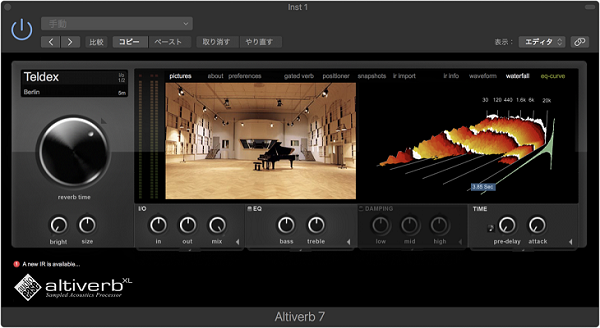
This type of digital reverb takes a sound that’s been recorded in a real place and emulates the reverb of the location.
The signal it uses contains all frequencies, enabling the algorithm to calculate the reverb more accurately. This makes convolution digital reverb the most realistic type of digital reverb.
Naturally, this comes at the cost of slower processing due to the high CPU usage. This makes it less than ideal for recording sessions.
Algorithmic Digital Reverb
Algorithmic digital reverbs have more pros than cons. While they might not sound as realistic, these reverbs are much faster in processing time than sampling reverbs.
You can use presets like a concert hall, cathedral, or small room reverb. More importantly, algorithmic digital reverbs allow you to create reverbs of environments that would otherwise be impossible.
How Is Reverb Used in Music?
Though it may sound like a cosmetic effect, reverb can be an incredibly versatile tool. How you use it should always depend on the recording you have, the genre of music you’re making, and the effect you want to deliver.
Here are some purposes that reverb can fulfill:
Add Depth to a Sound
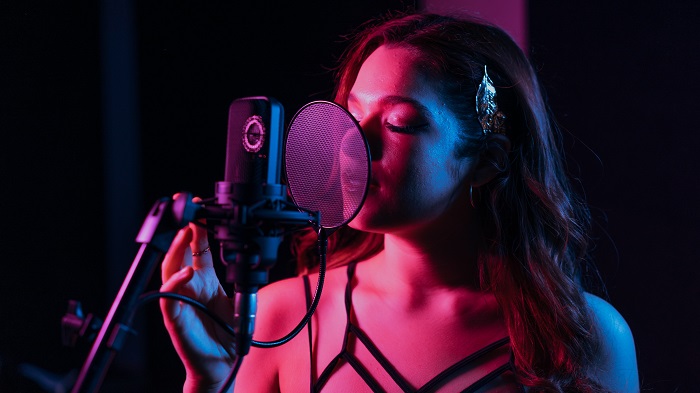
Since our brains are used to having reverb 100% of the time, a sound without reverb sounds foreign to our ears. This can make the song feel unnatural or off.
Adding reverb to the vocals can make the sound more comfortable and pleasing. On the flip side, you can use the eeriness if you’re aiming for a mysterious vibe.
Tie the Music Together
Your audio was likely recorded in different rooms and locations. This can make a perfectly good tune sound almost incoherent to our ears. This is why reverb can be the missing piece that ties the whole song together.
Adding reverb to your whole song can help blend these sounds together. Just enough and it sounds like the musicians were sitting in the same room. Too much reverb, per contra, can sound too distorted or dreamy.
Make Certain Elements Stand Out
If one sound’s reverb tail is shorter than the rest, meaning it takes longer for the sound to completely decay, it’s like to grab more attention.
You can use that to give that electric guitar an extra punch during the solo, or maybe create a different vibe for the bridge. This is often used to make the lead vocal pop out.
Create a Sense of Motion
You know exactly how a voice changes when it moves from a small elevator to a large hall. In other words, you don’t need to see changes in the environment to feel like it happened. This can be used in multiple ways, like changing the mood of the song based on the lyrics.

